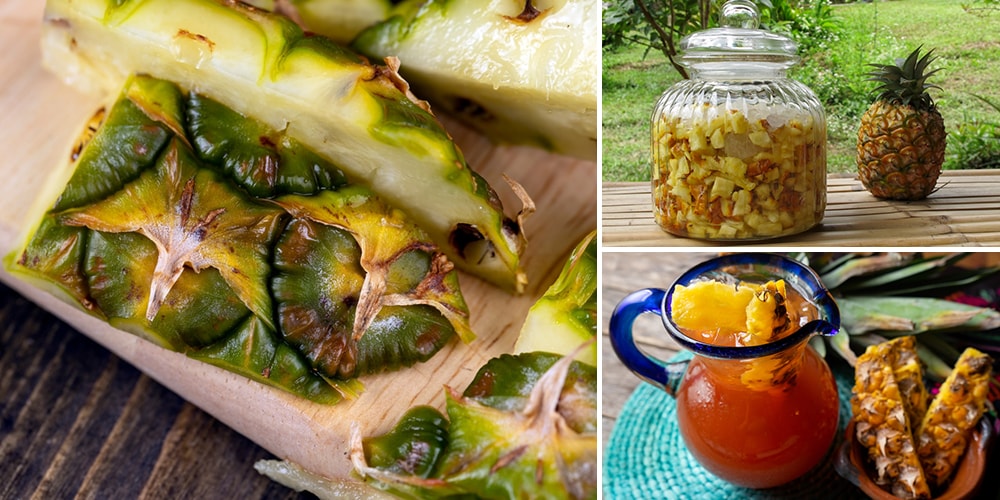
Don’t Throw Away Pineapple Peels and Cores, Do This Instead!
Many advocacies now revolve around upcycling food to minimize waste and help the environment. Food scraps take up a huge amount of our trash. Fortunately, these can be salvaged for other surprising and amazing uses.
It may not be every day that you peel and cut up pineapples when they are readily available in a can. But whenever fresh pineapple fruit is available, it is always best to choose the real thing. Unlike processed pineapples, fresh and organic ones are oozing with flavor and are packed with natural vitamins. But after the tedious process of peeling a pineapple, what about the peel?
Basically, for most people, pineapple peels land up in the trash. Not for you though. Here are some ways you can upcycle pineapple peels and cores to put them to more beneficial uses.
Uses of Pineapple Peels
The tough and spiky rinds of pineapple are as valuable and nutrient-dense as its pulp. It has a high concentration of bromelain which is an excellent anti-inflammatory. When consumed, it releases bromelain that helps reduce bouts of cold and swollen sinuses, as well as swelling from an injury.
Make Pineapple Peel Tea
Pineapple peel is inedible, yet you can still reap its benefits by turning it into a refreshing tea. It is rich in antioxidants and high in Vitamin C to boost your immune system. Pineapple is also highly-valuable for its heart health-promoting properties.
Prepare your healthy dose of pineapple tea by simmering its peel in a pot of water. You may add a cinnamon stick or powder to it to add a little distinctive aroma. Let it simmer for 25 to 30 minutes, strain and enjoy. You can add a sweetener like stevia or honey if you want.
Pineapple peel tea is low in calories but laden with water and fiber to keep the feeling of satiety longer. If you want to avoid overeating, take a glass of juiced pineapple peel before a meal. It will keep your stomach feeling full and curb cravings.
Alternatively, you can turn it into a cold refreshing drink by letting it cool before adding ice cubes.
Prepare a Juice
Blending pineapple peel releases its active compounds to boost your intake of nutrients. It adds more fiber and phytonutrients for extra health protection. Pineapple contains a proteolytic enzyme called bromelain. Bromelain is responsible for fighting inflammation, slowing blood clotting and interfering with tumor cells.
Give yourself a healthy treat by soaking pineapple peel in water and then boiling it for 25 to 30 minutes. Let it cool and blend until smooth. Pass the mixture into a sieve or strainer to extract the juice. Sweeten to taste and refrigerate until needed. You can reach out for this mix anytime you need to quench your thirst or cool down.
Smooth out Wrinkles
Pineapple is a natural astringent that tightens the skin to smoothen fine lines. Its vitamin C content is also vital in improving skin health. Bromelain washes away dead skin to leave you with better glowing skin.
For many of your skin troubles, gently rub pineapple skin over your face. You may also make tea out of the peel if you feel direct skin contact is too harsh for you. Massage it all over your face before rinsing it with cold water.
Treat Sallow Skin
Sallow skin or discoloration occurs as people age. It is identified by paler, browner or yellower skin that is quite different from the overall complexion. Aside from the uneven skin tone, rough and scaly patches may also occur, dimming the skin’s natural glow.
Chemical exfoliants may be used to reverse sallow skin. Or, you can prepare your own holistic skincare regimen with a natural product. Prepare juice from the pineapple peel by soaking and blending it with a little water. Take honey, turmeric and some milk and make a paste with the pineapple juice. Apply it all over the affected area before washing it with lukewarm water.
Soften Corns & Calluses
Corns and calluses in feet, hands, toes and fingers are common especially as you get older. They develop as the skin’s defense against friction and pressure lessens. Although they are generally painless, they can be uncomfortable and you might want to get rid of them immediately.
The remedy for corn is softening the skin using a pumice stone or nail file. Or, you can wash the area with lukewarm water and take some of those leftover pineapple skin. Apply it on the corn and wrap it with a bandage to soak the skin overnight. Remove the bandage and apply castor oil the next morning. Do this every night for about a week until you see results.
Relieve Clogged Nose
Flu and colds can take a toll on your daily life and can stretch to about a week of illness. To speed up recovery, you need to rest, hydrate with plenty of water, or reinforce it with soaked pineapple peel water. Pineapple gives you a dose of immune health-boosting Vitamin C to ward off sickness and shorten its duration. It also cures the inflammation of the sinuses and airways as well as reduces mucus production.
Boost Melatonin
Melatonin is naturally produced in the body but tends to decline as we age. Increasing melatonin levels keeps the body in a state of quiet wakefulness and relaxation which induces sleep. There are many fruits that can boost melatonin and pineapple is one of the top-ranking fruits.
Taking pineapple peel juice two hours before bedtime can help calm your nerves. It helps your muscles relax so your body can eventually fall into a deep and restful sleep.
Brew Tepache
Tepache is a Mexican homemade brew from pineapple peels. It is not just a refreshing beverage but is also a remedy for many health issues. Tepache is used as a diuretic to cure water-retention problems.
Nowadays, different variations of this fermented cocktail are made. But whatever the ingredients, a tepache is not complete without the signature pineapple peel. It is simple to prepare tepache but you will need to wait for a few days for the fermentation.
To make tepache, dissolve ½ cup piloncillo (raw cane sugar) or just brown sugar in 4 ½ cups water and stir until dissolved. Add pineapple peels and its core in a pot of water with a stick of cinnamon and stir well. Cover the pot with a dish towel at room temperature and allow it to ferment for 24 to 36 hours.
The tepache is fermenting if you notice a frothy foam on the surface. Otherwise, you can continue brewing it for one more day. Strain the drink and discard all the solids, then put it in the refrigerator. Serve with ice or dilute with more water if desired.
⇒ Eat These 10 Foods For 7 Days Straight to Manage Chronic Pain (Video)
Natural Aphrodisiac
According to studies, pineapple peel juice is an excellent drink for enhancing sexual performance. Bromelain boosts testosterone in men, enhancing their sex drive.
Pineapple Vinegar
Add a touch of pineapple to your vinegar dressing for a fresh twist on salads and sautés using pineapple vinegar. Pineapple vinegar is similar to apple cider vinegar with the same health benefits. It can improve digestion, reduce inflammation and strengthen the immune system by letting it absorb maximum nutrients.
Here is the pineapple vinegar recipe.
Ingredients:
- ½ pineapple chunks with skin on
- 4 cups water
- 1 cup brown sugar
- 2 whole cloves
Steps:
- In a clear glass jar, dissolve brown sugar in water.
- Add the pineapple and cloves.
- Cover the jar with a cloth and fasten it with a rubber band.
- Store in a cool and dry place, away from direct sunlight.
- Stir regularly for 3 to 4 weeks or longer until it acquires an acidic vinegar-like taste.
- Strain the liquid in a glass jar and discard the solids. Store it in a cool place for it to last for up to a year.
Uses of Pineapple Cores
Like the peel, pineapple core is also almost always taken for granted. Since it is quite tough, it often ends up in the dumps after cutting off the pulp. Little did we know, the stout core is also chock full of nutrients and deserves to be repurposed.
Pineapple Syrup
Give your drinks a tropical twist by adding a dollop of pineapple syrup to taste. Pineapple is a great addition to cocktails, and many liquors like mojitos and gins. It can turn bland water into an instant delicious soda. Pineapple syrup is also used for the famous piña colada or for flavoring anything you can think of, including ice cream.
Make pineapple syrup by adding 1 cup of pineapple core, 3 oz lemon rind and 3/4 cup granulated sugar in a pot. Bring to a boil then lower the heat to simmer until the mixture thickens. Strain into a bowl, pressing it well to extract all the liquid.
Transfer the pineapple syrup to a bottle and store it in a fridge where it can keep for about a month.
Smoothies
Pineapple has a versatile flavor that can go well with a variety of dishes and drinks. Save that pineapple core so you can pop them into the blender as you prepare any smoothie. It gives the drink a sweet-acidic taste and a handful of nutrients that your body will thank you for.
Pineapple Ice Cubes
Give your water or cocktail a twist by adding pineapple core ice cubes into it without watering it down. Instead of throwing pineapple core, cut it into small chunks and chuck it into the refrigerator in a freezer bag. You can use these as ice cube replacements or garnish for any beverage.
Takeaway
It is easy to label pineapple peels and cores as food waste due to their hard and tough characteristics. While they seem useless, it is interesting to know there are endless ways you can use them. It could be either for food or for treating health conditions, pineapple really has a lot in store.
So, the next time you grab a piece, you know what to do after peeling and coring it. With some effort, you can turn these into powerful remedies.

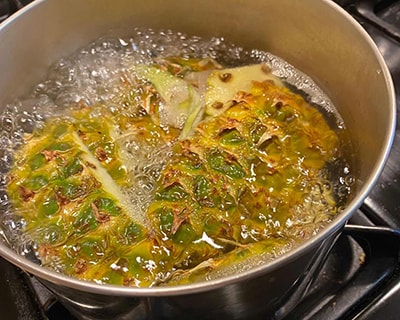
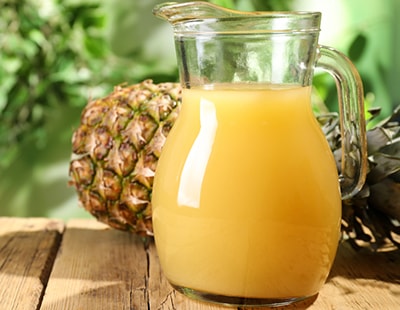
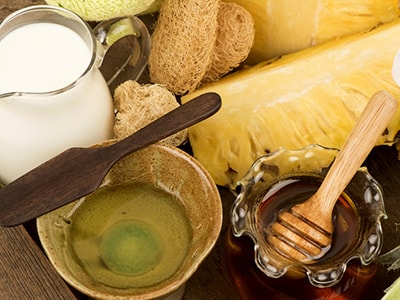
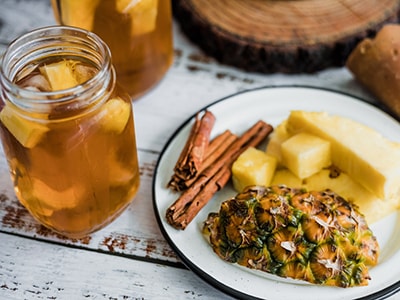
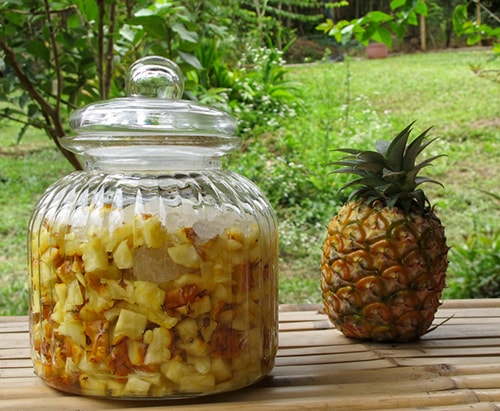
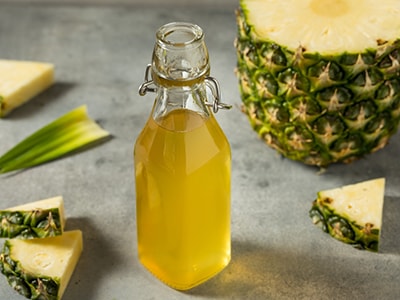
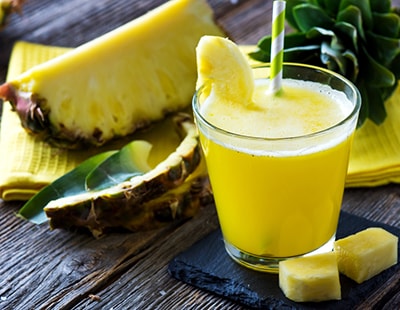

“½ pineapple chunks with skin on”
This isn’t really a measurement – can you elaborate please?
I think it is shorthand for 1/2 pineapple, cut into chunks with skin on.
Hi Kevin,
Thank you for your comment. Yes, that’s correct.
Many blessings and good health!
Thank you for sharing. God Bless
Hi Judy,
You’re very welcome! We’re glad to hear the article was helpful for you.
Many blessings and good health!
The inside of the peel is also good to take the sting out of a cut. I keep a couple of chunks of fresh pineapple in the freezer for future minor injuries.
Hi Beth,
Thank you for sharing this with us!
Many blessings and good health!
Nice! I’m going to try this! Thnx!
I think I’d make darn sure the pineapple is scrubbed of pesticides and chemicals before using it this way. I think that goes without saying. Pineapple outer parts are bumpy, so it’s tricky to do this. Vinegar and baking soda soak, maybe.
Yes i was thinking about this too 🙂
wonderful blog with a great bit of information. Thank you !
Buying from organic farms with a good reputation is essential with any produce. Doesn’t really matter what you can create if it is saturated with toxic chemicals, that are pretty much illegal in the rest of the world- except USA.
Hi Willow,
Thank you so much for your heartwarming words! It’s nice to know our readers do enjoy the blog.
Many blessings and good health!
Doesn’t boiling anything with Vit C (especially that long) destroy the Vit C?
The University of Illinois Department of Food Science and Nutrition compared a variety of fresh, canned and fresh cooked foods and says that while vitamin C may be lost during the process of cooking or canning, it dissolves in the cooking liquid. In canned foods, the remaining vitamin C is stable for two years. And thiamine, another heat-sensitive B vitamin found in beans, also survives the canning process well.
Hi Barbara,
Boiling pineapple does destroy some of its vitamin C content. Vitamin C is water-soluble and can be leached into the water when boiled. However, the leaching of vitamin C into water by itself doesn’t destroy the vitamin C. It’s still there; it’s just in the water rather than the fruit.
Many blessings and good health!
Thanks for this uses of pineapple . I will now keep the skin and use it for many tings to help me and others I have te herbal book and I love it
Hi Evelyn,
We’re happy to hear the articles are helpful and you enjoy the book too.
Many blessings and good health!
In West Africa the peel and core of a whole pineapple are boiled for 20 minutes together with a whole grapefruit cut into chunks. The mixture is strained and drunk as a cleansing diuretic. I adopted this tradition and like the results.
Hi Hilary,
Thank you so much for taking the time to share this. It’s much appreciated.
Many blessings and good health!
I never would have thought I’d get such a treasure trove of information when I ordered your book. Thanks so much for caring enough.
Hi Charlene,
Thank you so much for your kind words! They’re much appreciated!
Many blessings and good health!
Is this safe to use during pregnancy? Eating the cooked peels and tea? I’m in my second trimester and have a cold/flu.
I remember in West Africa the core of a young pineapple is used for abbortion (together with other ingrediënts).
Thanks!
Hi Sabine,
There is no scientific evidence that pineapple is harmful during pregnancy, although eating too much may cause indigestion and diarrhea.
Pineapple is a nutritious fruit that can be part of a balanced diet to support a healthy pregnancy.
Many blessings and good health!
I’m worried about pesticides on the pineapple skin. Do you necessarily recommend only using organic pineapple? I’m not sure if there is need to worry or not.